
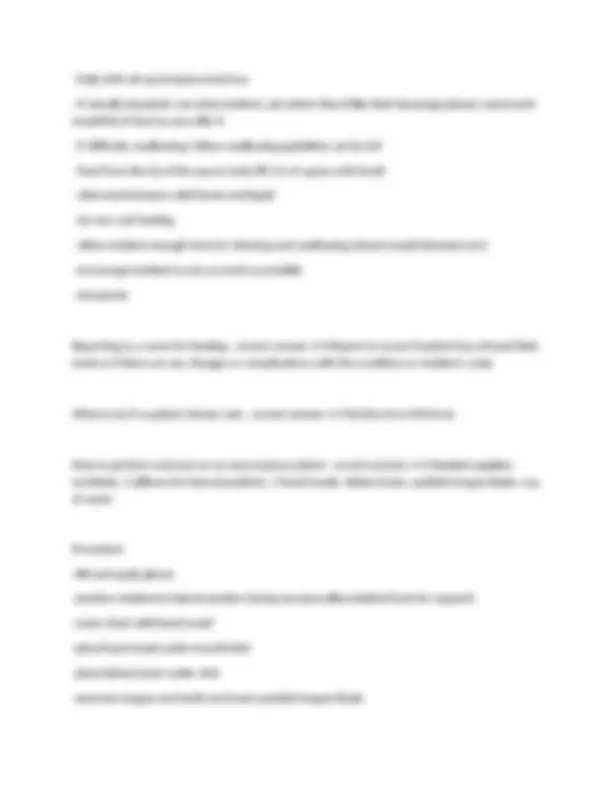
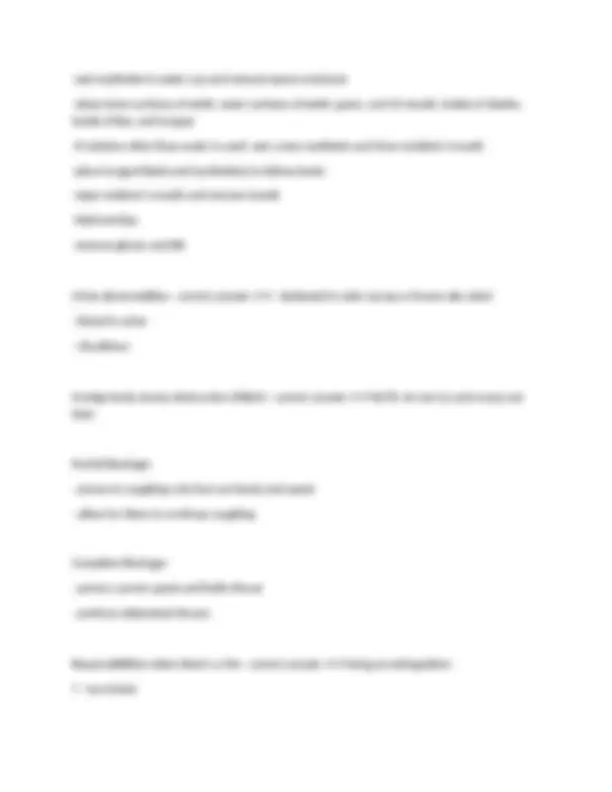
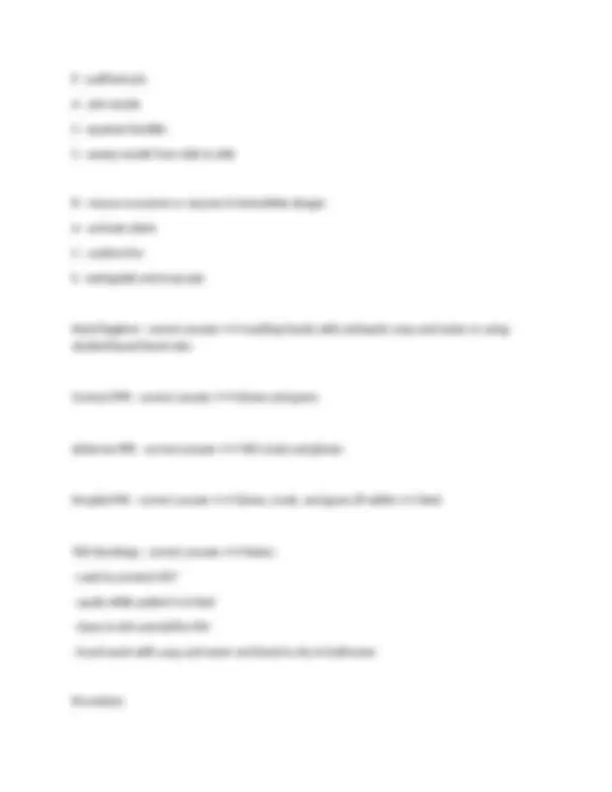
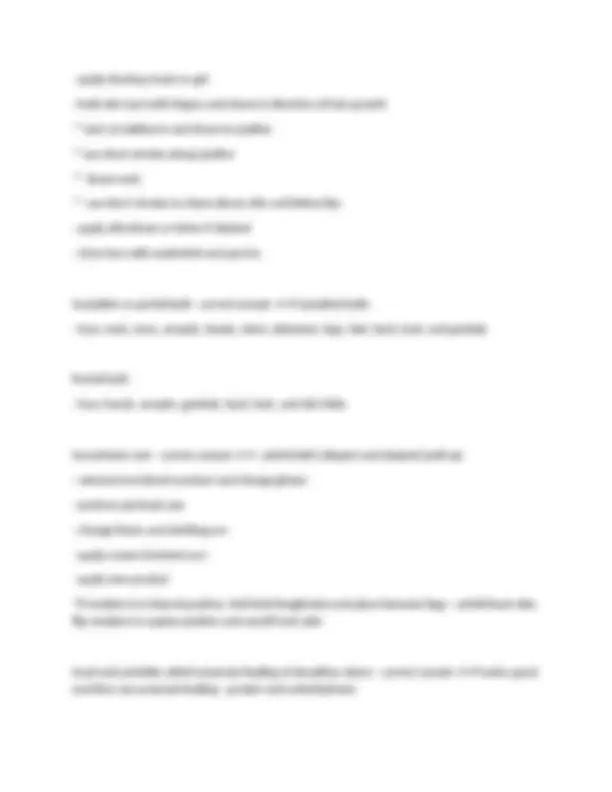
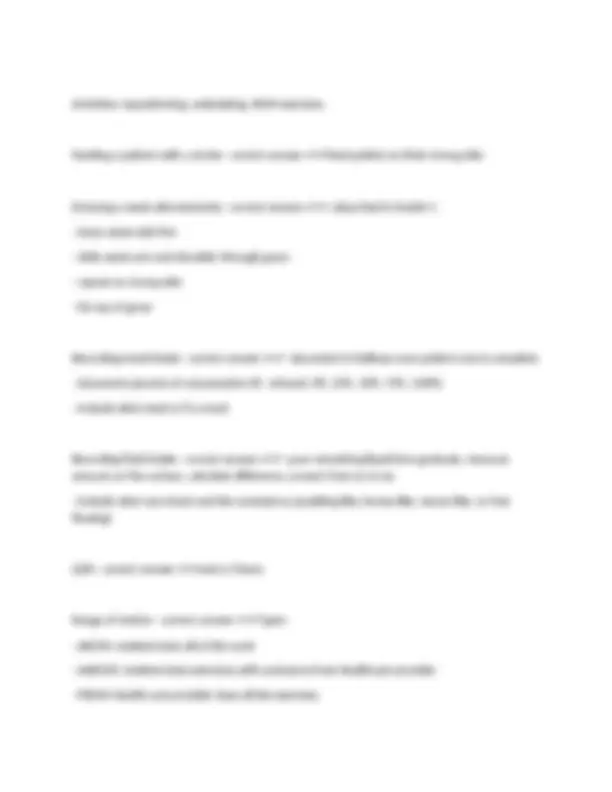
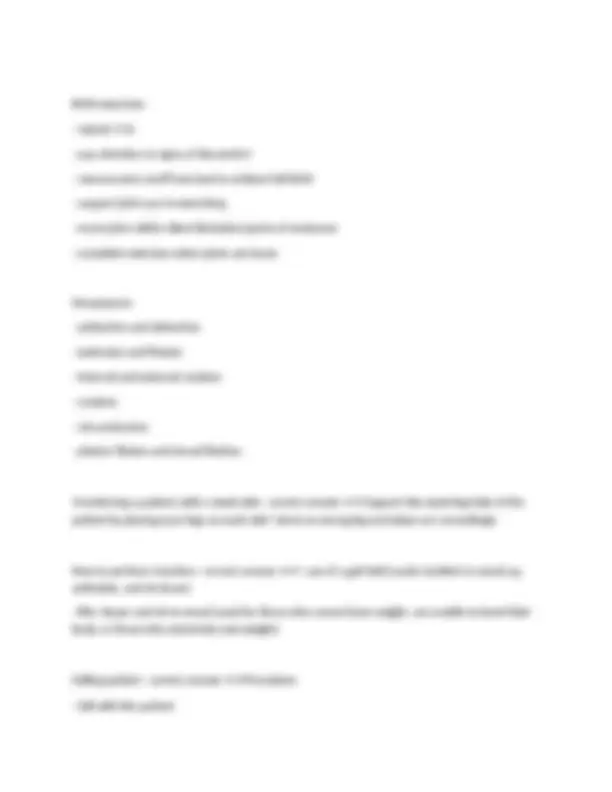
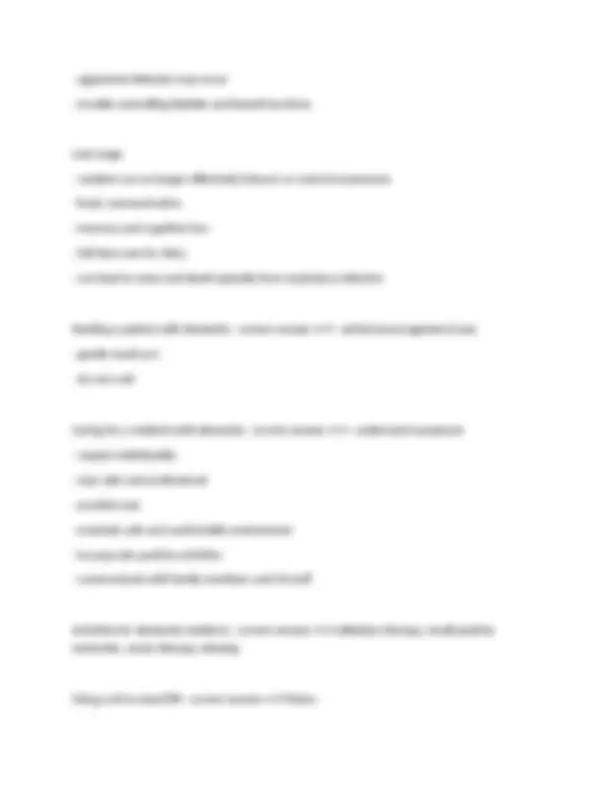
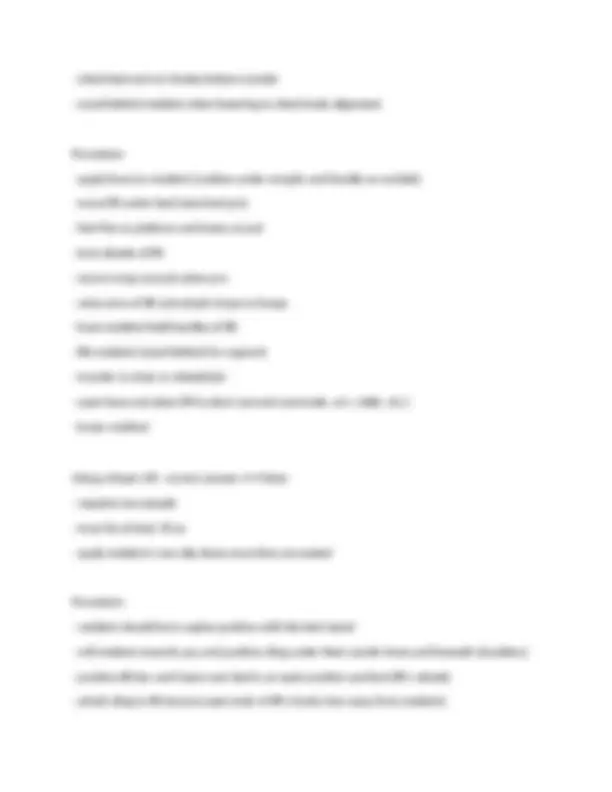
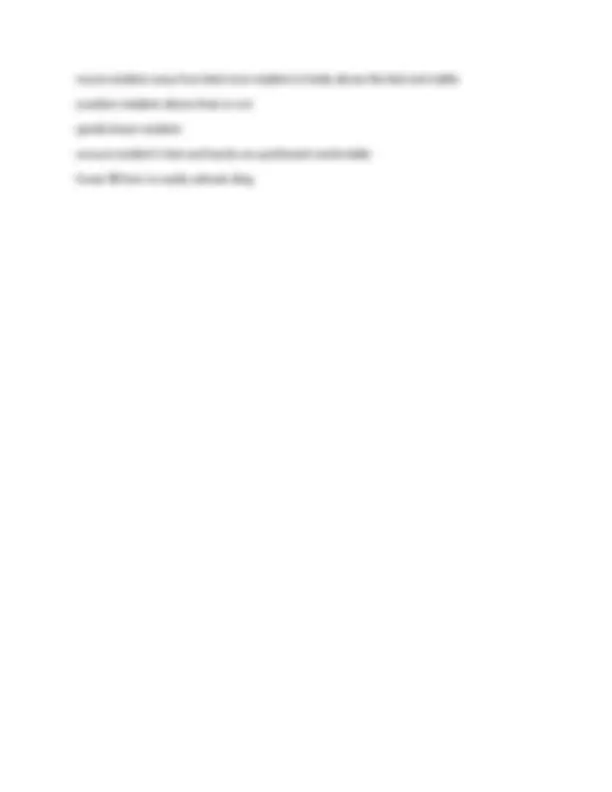


Study with the several resources on Docsity

Earn points by helping other students or get them with a premium plan


Prepare for your exams
Study with the several resources on Docsity

Earn points to download
Earn points by helping other students or get them with a premium plan
Community
Ask the community for help and clear up your study doubts
Discover the best universities in your country according to Docsity users
Free resources
Download our free guides on studying techniques, anxiety management strategies, and thesis advice from Docsity tutors
NRSNA 300 Final Exam questions and answers graded A+
Typology: Exams
1 / 15

This page cannot be seen from the preview
Don't miss anything!










Components of effective communication - correct answer ✔✔Sender, mode of communication, recipient, and feedback Nonverbal communication - correct answer ✔✔communication using body movements, gestures, and facial expressions rather than speech Working with a patient with behavioral problems - correct answer ✔✔- understand symptoms of mental health condition
-wet toothette in water cup and remove excess moisture -clean inner surfaces of teeth, outer surfaces of teeth, gums, roof of mouth, inside of cheeks, inside of lips, and tongue -if solution other than water is used: wet a new toothette and rinse resident's mouth -place tongue blade and toothette(s) in kidney basin -wipe resident's mouth and remove towels -lubricate lips -remove gloves and HH Urine abnormalities - correct answer ✔✔- darkened in color (syrup or brown ale color)
P - pull lock pin A - aim nozzle S - squeeze handles S - sweep nozzle from side to side R - rescue consumer or anyone in immediate danger A - activate alarm C - confine fire E - extinguish and evacuate Hand hygiene - correct answer ✔✔washing hands with antiseptic soap and water or using alcohol-based hand rubs Contact PPE - correct answer ✔✔Gloves and gown Airborne PPE - correct answer ✔✔N95 mask and gloves Droplet PPE - correct answer ✔✔Gloves, mask, and gown (if within 3-5 feet) TED Stockings - correct answer ✔✔Notes:
ROM exercises: